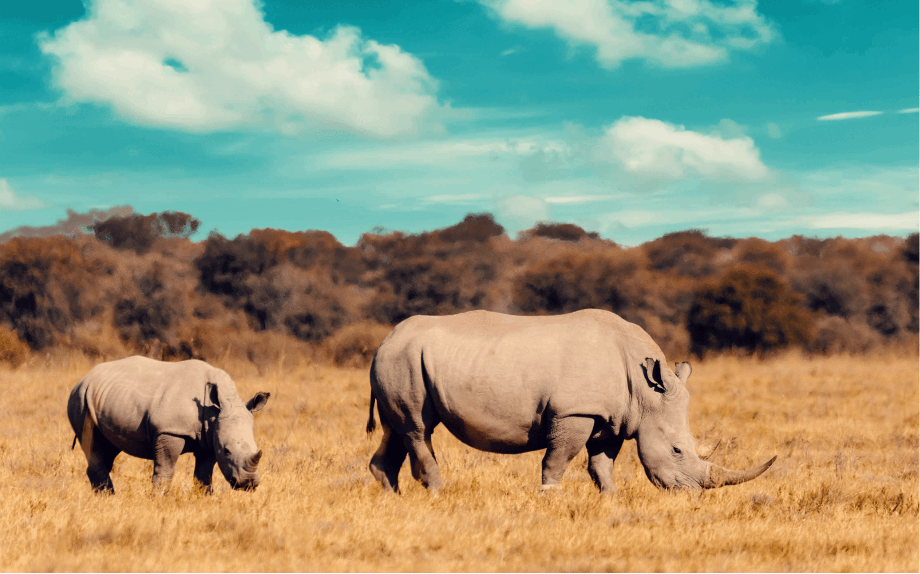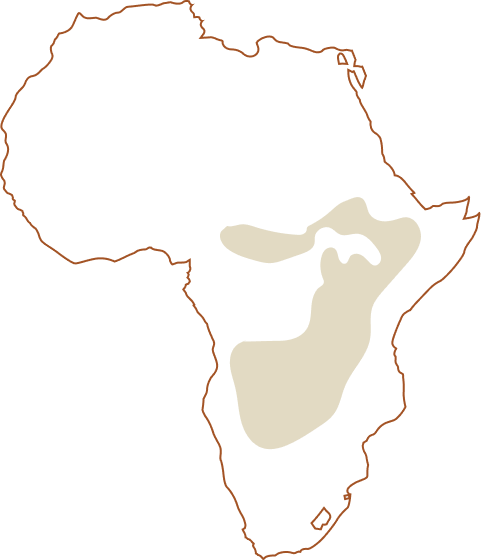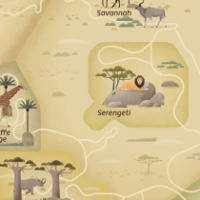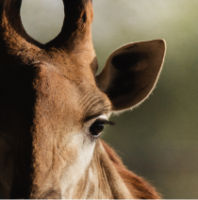
Southern White Rhinoceros
Ceratotherium simum simum
White Rhinos are the larger of the two African rhino species and have a flat, square upper lip which they use to graze grasses. The White Rhino spend half of its waking hours eating and the remainder of the time resting. They must eat up to 50 kilograms of grass per day to sustain itself.
Rhinos mark their territory in many ways. They scrape their horns and hooves on the ground and bushes and deposit urine and dung. Rhino dung is very hard to miss. It sits in large piles and a dominant bull will leave around 20 to 30 piles throughout its territory.
Conservation
All rhinos are threatened by habitat loss, but poaching is probably the single greatest threat they face at the moment. Rhino horn is used in many traditional medicines but has no known health benefits for humans and consists largely of keratin, the same substance as human fingernails.
Despite this, fuelled by demand from increasingly wealthy middle classes in some Asian countries, rhino horn is illegally traded on the black market. It is desired largely as a symbol of wealth and status.
At its worst poachers killed an average of three rhinos per day – or about 100 per month – to feed the demand for horn on the black market. Some conservation groups have tried dehorning wild rhinos to protect them, but poachers will still kill the animals in order to avoid tracking them again.
- Species
- Southern White Rhinoceros
- Length
- 3.4-4 m
- Height
- 1.6-1.8 m
- Weight
- 1.8-2.7 tonnes
- Calf
- 1
- Range
- Southern Africa. About 98.5% of the population lives in just five countries (South Africa, Namibia, Zimbabwe, Kenya and Uganda).
- Conservation status
- Near Threatened
-


©2025 EPAA Sharjah All Rights Reserved

